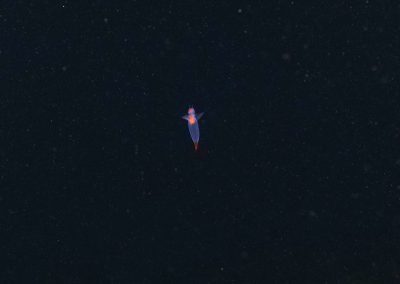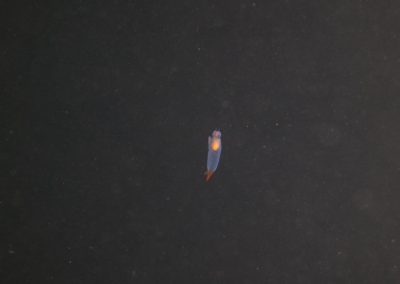Sea Angel
Clione limacina
Sea butterflies are related to sea slugs and snails, but they are unique in this group because they constantly swim or drift in the open water instead of being a slow-moving resident of the seafloor. As an adaptation to this pelagic life, sea butterfly species have either developed a very thin shell or have completely lost their shell altogether.
The Sea Angel here is one species that has evolved an adult form that has no shell. Ranging in size from 1-8 cm long, this species is large compared to other sea butterflies. The sea butterflies Limacina helicina and Limacina retroversa don‘t have widely accepted common names in English. These are both much smaller than the Sea angel (<7 mm) and both bear a thin shell. The wing-like portion extends from the mouth of the shell and resembles the wings of a butterfly. The sea angel and Limacina helicina are cold-water species, so they are fairly common off the north and east coasts of Iceland, where the ocean is coldest. L. retroversa, on the other hand is found to the south and southwest because it must have warmer water. These tiny animals are found in the pelagic environment the world over.
The sea angel is no angel to the other sea butterfly species as it is a predator on them, in fact it does not eat anything else. It is reported that the sea angel can survive up to a year without food if it does not find its cousins to eat, the Limacia species feed on plankton they catch with a mucose net they secrete.
HÞV




